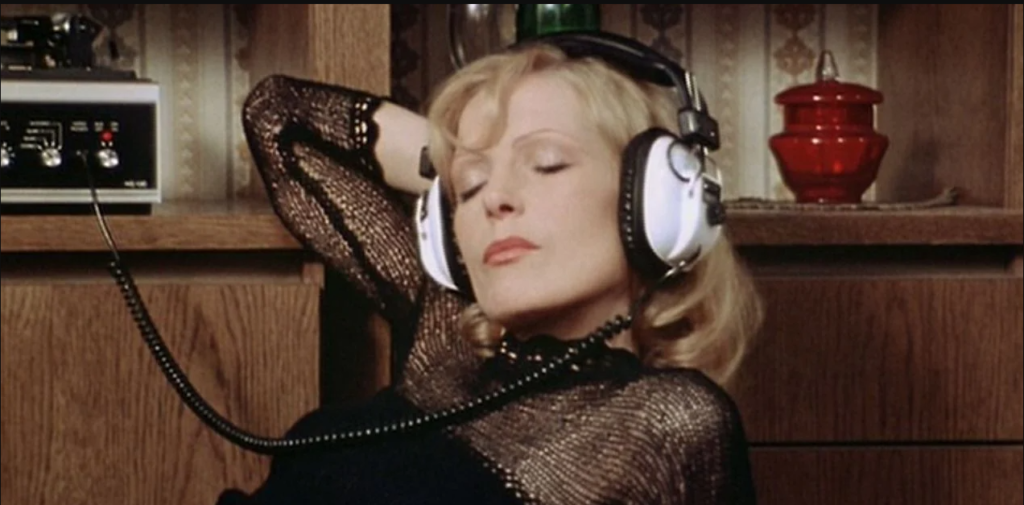Is it a French thing? How is it possible for movies to be emotional without ever straying into sentimentality, both philosophical and powerfully vulnerable, essentially hopeful in matters of the heart without sacrificing unflinching realism?
This is the tightrope that Mia Hansen-Løve walks in the three films leaving the Criterion Channel in January. I hurried to watch all three in the waning days of the month, and found myself increasingly absorbed by Hansen-Løve’s universe. As I watched the films, in no particular order, each in turn became my favorite until, as I finished “Goodbye, First Love” (2011), the total effect was palpable absorption into Hansen-Løve’s approach to filmmaking.
Thematically, “Goodbye, First Love,” “Things to Come” (2016), and “Father of My Children” (2009) share an interest in the struggles of couples, tested or enlarged by the introduction of a third person. And, while serene love may be the ideal, it is, realistically, largely absent. Hansen-Løve explores most acutely the ways coupling can go wrong.
In each, the main setting is Paris, with occasional forays into the countryside for reflection, as though certain kinds of emotional developments demand a pastoral setting. Hansen-Løve’s characters are old and young, rich and not.
Class struggle is an underlying theme, but it is not a large one, and seems to exist more to ground and prove the characters than as part of some political agenda.
In “Things …,” Isabelle Hubert’s character Nathalie, an aging Philosophy professor, is confronted by a politically-involved former student Fabien (Roman Kolinka). “You don’t let everyday behavior betray your values,” he says, suggesting that her “bourgeois lifestyle” makes her a hypocrite. Nathalie retorts, “Why not outgrow these schemes? I think they’re sterile. Revolution is not my goal. It’s true. To help kids think for themselves.”
The issue for Hansen-Løve seems to be not whether one lives a life consonant with theoretical political belief, but whether one lives a life that satisfies the demands of ones own sense of self. The quest is internal.
For Nathalie, the compensation for loss of husband to another woman and her mother to death is freedom, most importantly freedom of the mind. Shortly after her encounter with Fabien, she reads her class a quote from Rousseau:
So long as we desire, we can do without happiness. We expect to achieve it. If happiness fails to come, hope persists. And illusion’s charm lasts as long as the passion causing it. Thus, this condition suffices to itself, and the anxiety it inflicts is a pleasure which supplants reality, perhaps bettering it. Woe to him who has nothing to desire! He loses everything he owns. We enjoy less what we obtain than what we desire, and are happy only before becoming so.
Nathalie continues: “This is the power of imagination. It compensates for the absence of the loved one with a pleasure that is purely mental, unreal in a way, yet nevertheless effective. For people with a lot of imagination, like Julie but probably Rousseau as well, phantasmagorical satisfaction is a real comfort that supplants, replaces carnal pleasure.”
The importance of individual responsibility and self-definition undergird the emotions at play in these three films. The morality involved in choosing well extends not only to romantic love, but to the family and to the choice of vocation. Divorce and death may challenge us, but, if thoughtfully structured, we can persist with purpose.
As Lorenz ruminates to Camille, “Life is never what you expect. Your fantasy-version of the world is doomed to failure. It’s up to you to create one that’s deeper, more real. That’s how you become yourself.”
In pursuit of purpose, fidelity to ones own guiding light is primary; infidelity to another may be necessary to fully understand oneself and, in Hansen-Løve’s universe, is less a stressor than a signal.
In “Things …,” when Nathalie’s husband tells her he has met someone else, her strongest feeling seems to be not hurt, but displeasure that he should make her aware of this other person. In “Goodbye…,” Camille (played by Lola Creton), tempted to return to Sullivan (Sebastian Urzendowsky) after a long separation, tests her resurgent feelings by sleeping with him again, hiding this new affair from her then husband, the older Lorenz (Magne Håvard-Brekke).
Because of this unfaithfulness, Sullivan himself chastises her as no longer “pure,” but in the French universe of Hansen-Løve, honesty with oneself is the ultimate good, and this exploration is what Camille requires in order to understand her ultimate choice.



